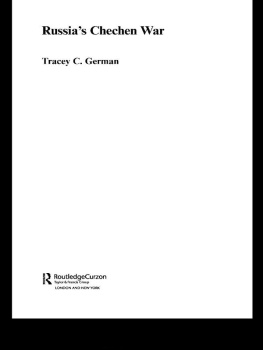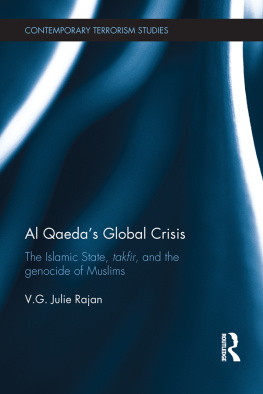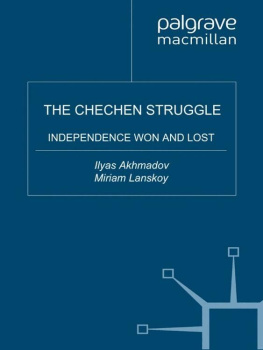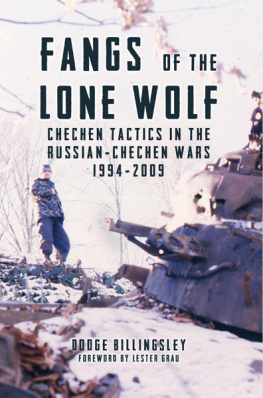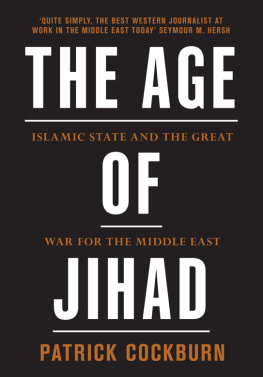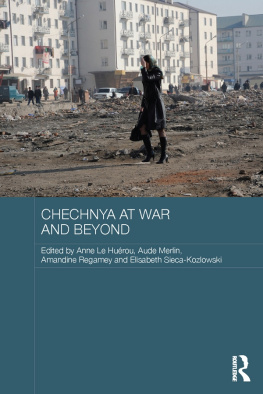ON JULY 15, 2006, THE LEADERS OF THE WORLDS MOST POWERFUL governments arrived in St. Petersburg to discuss international economics, politics, and issues of security at the annual G-8 Summit. Russian president Vladimir Putin hosted the meeting, and the guest list included President George W. Bush, Prime Minister Tony Blair, Chancellor Angela Merkel of Germany, Prime Minister Stephen Harper of Canada, President Jacques Chirac of France, Prime Minister Romano Prodi of Italy, and Prime Minister Junichiro Koizumi of Japan.
Someone else wanted to crash the meeting. Shamil Basayev, also known by his nom de guerre, Amir Abdallah Shamil Abu-Idris, was planning to make this a G-8 meeting never to be forgotten.
Basayev, a tall, long-bearded forty-one-year-old, was a hero to some. But to most he was the nefarious chief of the Islamist-Jihadists in Chechnya, one of the most feared terrorists in the world. He had masterminded the 2002 siege of the Dubrovka Theater in Moscow (which led to the deaths of 129 hostages and 42 terrorists) and the 2004 seige of a secondary school in Beslan, Russia (where 344 civilians were killed, 186 of them children). Basayev was capable of planning elaborate attacks, and he viewed the deaths of innocent people not as collateral damage but as political justice.
For Basayev and his fellow Islamist-Jihadist leaders in Chechnya, the G-8 summit was an irresistible target. A spectacular strike deep into the heart of Russia was perhaps his last chance to refocus world attention on the lingering struggle in Chechnya and generate international pressure on the Kremlin to make concessions to the Chechens.
Aware of the logistical challenges such a mission would involve, the Chechen jihadist leaders consulted with the supreme Islamist-Jihadist leadership, including members of the inner circle of Osama bin Laden and Ayman al-Zawahiri, in both Tehran and the mountains of the Afghanistan-Pakistan border area. The al Qaeda leaders promised them every possible assistance, deeming the proposed operation so important that they instructed the leading Arab volunteer commanders then in Chechnya to participate in the strike personally alongside their Chechen counterparts.
In the second half of May, the Islamist-Jihadist leadership in Chechnya evolved two contingency plans: best-case and worst-case scenarios. Their preferred plan involved sending a strike team of martyrdom seekerssuicide terroriststo St. Petersburg to conduct a spectacular two-phase strike at the time of the summit. In the first phase, they would shower the summits compound with improvised rocketscalled shaytan-truba (devil-tubes) by the Russian security servicesin order to scare, if not kill, the world leaders. The second phase called for the terrorist team to withdraw into a crowded public place (a school, hospital, or shopping mall) in the center of St. Petersburg, take as many hostages as possible, and commit to a protracted standoff. The plan specifically required the terrorists to commit martyrdom at the endcausing massive carnage among the civilian hostages. The Islamist-Jihadist leadership in Chechnya stressed the importance of hostage taking because such operations take time to resolve. With the international media gathered in St. Petersburg for the summit, the operation would attract unprecedented international attention, shaming President Putin and his fellow antijihadist guestsparticularly President George W. Bush and Prime Minister Tony Blair.
The alternative plan addressed the possibility that the strike team might fail to breach the security cordons around St. Petersburg or that they might arouse suspicion before they reached the city. Under such circumstances, the terrorist team was to proceed to the nearest small town and conduct a localized version of the plan. They would first rocket the center of the town in order to attract attention and sow confusion. Then the terrorists would seize a school or a hospital full of hostages, barricade themselves, and maintain a standoff for as long as possible. At a given time, they would provoke a clash with the security forces that would culminate in the mass murder of the hostages and the martyrdom of the terrorists. Throughout the standoff, the terrorists were instructed, they should demand access to foreign officials as well as both Russian and foreign media, ostensibly to be used as mediators but actually to serve as instruments for transmitting the terrorists message to the world.
Regardless of whether the terrorists reached St. Petersburg, both the Chechnya-based jihadist leadership and the supreme al Qaeda leadership were certain that such an audacious strike would provoke massive retaliation by the Russian military and security forces. The leaders hoped that such a Russian strike would antagonize the civilian population of Chechnya, and the northern Caucasus as a whole, enough to scuttle the trend of pacification and normalization that had dampened the Islamists momentum in the region in recent years. The leaders looked forward to the spectacle of casting the northern Caucasus back into the flames of jihad.
In the first half of June, the regions most prominent Islamist-Jihadist commander, the native Chechen terrorist Shamil Basayev conducted a series of meetings with his senior commanders in Chechnya and southern Russia to begin implementing the strike. The most important of these was a war council convened in Krasnodar Krai, southern Russia, with a group of amirs (senior commanders) based in the krais of Adygeya, Karachayevo-Cherkessia, Krasnodar, and Stavropol. In that meeting, Basayev outlined his plans and demanded that the amirs start preparing the logistical and transportation infrastructure required to smuggle the terrorist team deep into the heart of Russiawith luck, all the way to St. Petersburg.
During this planning phase, however, the supreme al Qaeda leaders warned the Chechen jihadists that U.S. and British intelligence personnelthe latter feared mostwould be taking extra precautions to prevent any viable threat to the Western leaders. The Islamist-Jihadists would have to launch a major diversion in order to attract the attention of the intelligence servicesboth Russian and Westernand perhaps cause friction between them. The diversion should be conducted outside Russia and the Caucasus, the supreme leaders dictated, but the Chechen leadership must seem to be directly involved in, if not responsible for, the operation. After some deliberation, the leaders settled on a strike in Iraq, where trusted jihadist resources in the Baghdad area could be activated and directed on a moments notice.
On June 8, Basayev started laying groundwork to create the impression that the Chechens were responsible for the upcoming decoy operation, even though his forces would actually have nothing to do with it. He convened an urgent commanders meeting in Chechnya, knowing full well that Russian intelligence would learn about the contents soon afterward. Basayev also made sure that a report on the meeting would be transmitted to his allies in the Middle East through channels likely to be intercepted by Western intelligence services. In the meeting, Basayev announced that Chechen special services would now be used abroad to arrest and kill international terrorists and war criminals [i.e., the Russians] who are responsible for the genocide of the Chechen people and have been sentenced to death by the Shariah court. Basayev concluded his announcement with a dramatic statement: We attach great significance to the punishment of war criminals and international terrorists responsible for the genocide of the Chechen people and violence against the Muslims of the Caucasus and the whole of Russia. Thank God, our forces and capabilities are growing. We have been watching some odious figures. God willing, none of the criminals will be able to escape due punishment. Retribution will not be limited to any time frame.




